- Home
- About WVN
-
WVN Issues
- Vol. 1 No. 1 (Oct. 2017) >
- Vol. 2 No. 1 (Feb. 2018) >
- Vol. 2 No. 2 (Jun. 2018) >
- Vol. 2 No. 3 (Oct. 2018) >
- Vol. 3 No. 1 (Feb. 2019) >
- Vol. 3 No. 2 (Jun. 2019) >
- Vol. 3 No. 3 (Oct. 2019) >
- Vol. 4 No. 1 (Feb. 2020) >
- Vol. 4 No. 2 (Jun. 2020) >
- Vol. 4 No. 3 (Oct. 2020) >
- Vol. 5 No. 1 (Feb. 2021) >
- Vol. 5 No. 2 (Jun. 2021) >
- Vol. 5 No. 3 (Oct. 2021) >
- Vol. 6 No. 1 (Feb. 2022) >
- Vol. 6 No. 2 (Jun. 2022) >
- Vol. 6 No. 3 (Oct. 2022) >
- Vol. 7 No. 1 (Feb. 2023) >
- Vol. 7 No. 2 (Jun. 2023) >
- Vol. 7 No. 3 (Oct. 2023) >
- Vol. 8 No. 1 (Feb. 2024) >
-
Events
- CIES 2023, Feb. 14-22, Washington D.C., USA
- ICES 4th National Conference, Tel Aviv University, Israel, 20 June 2021
- 2022 Virtual Conference of CESHK, 18-19 March 2022
- ISCEST Nigeria 7th Annual International Conference, 30 Nov.-3 Dec. 2020
- 3rd WCCES Symposium (Virtually through Zoom) 25-27 Nov. 2020
- CESA 12th Biennial Conference, Kathmandu, Nepal, 26-28 Sept. 2020
- CESI 10th International Conference, New Delhi, India, 9-11 Dec. 2019
- SOMEC Forum, Mexico City, 13 Nov. 2018
- WCCES Symposium, Geneva, 14-15 Jan. 2019
- 54th EC Meeting, Geneva, Switzerland, 14 Jan. 2019
- XVII World Congress of Comparative Education Societies, Cancún, Mexico, 20-24 May 2019
- ISCEST Nigeria 5th Annual Conference, 3-6 Dec. 2018
- CESI 9th International Conference, Vadodara, India, 14-16 Dec. 2018
- ICES 3rd National Conference, Ben-Gurion University, Israel, 17 Jan. 2019
- WCCES Retreat & EC Meeting, Johannesburg, 20-21 June 2018
- WCCES Symposium, Johannesburg, 21-22 June 2018
- 5th IOCES International Conference, 21-22 June 2018
- International Research Symposium, Sonepat, India, 11-12 Dec. 2017
- WCCES Info Session & Launch of Online Course on Practicing Nonviolence at CIES, 29 March 2018
- WCCES Leadership Meeting at CIES, 28 March 2018
- 52nd EC Meeting of WCCES, France, 10-11 Oct. 2017
- UIA Round Table Asia Pacific, Chiang Mai, Thailand, 21-22 Sept. 2017
- Online Courses
|
Abstract This study aims to develop and validate the Teacher Aptitude Test for student teachers in Myanmar. A total of 600 student teachers were selected by using purposive sampling technique. Then, exploratory factor analysis was performed and finally 54 named as mental ability, interest in profession, attitudes towards students/children, adaptability and moral character. The result of confirmatory factor analysis for five factors model showed fit and validity. Coefficient alpha of the overall test is 0.89. Those for each subscale are also high enough. Taken together, the Teacher Aptitude Test demonstrated sufficient evidence of reliability and validity. Keywords: Teacher Aptitude Test, Student Teachers, Test Development 1. Introduction Aptitude tests begin with high schools or college students to make choices for their education that will influence the later part of their lives. Some students choose university or career depending on the suggestions and recommendations of friends and parents (Mankar & Chavan, 2013). But, this way of making education choices can be erroneous for the future lives of students. Generally, when a person does not have the specific aptitude for a particular work, he or she is not interested in that work or profession and so he or she fails to make required efforts for essential requisites for the job (Oyetunde, 2007). Today, the role of aptitude tests is getting to be fundamental in recruitment and selection process of professional training all over the nations. One of the most well-known aptitude tests in education is the Differential Aptitude Test (DAT). It includes verbal reasoning, numerical abilities, abstract reasoning and language usage (Gregory, 2011; Mankar & Chavan, 2013). Minnesota Clerical Aptitude Test is very popular consisting of two parts, a clerical number checking test, and a clerical name checking test (Longstaff & Howard, 1954). The General Aptitude Test Battery (GATB) is the most widely used test (Mellon, Daggett, MacManus, & Moritsch, 1996). The GATB measures nine distinct aptitudes with twelve separate tests (pencil and paper test) and four performance tests. According to Bingham (1942), “Teaching aptitude is a specific ability, potentiality, interest, satisfaction and fitness in teaching profession’’. Teaching aptitude implies aptness, tendency and capability for teaching performance (Naik, 2016). The teacher plays an imperative part to implement the arrangement and programs defined to succeed in the qualitative and quantitative improvement of education (Darling Hammond, 2000). To create a nation, the standard of education is exceedingly essential. Teachers’ quality can alter relying on the selection procedure utilized for the admission of trainees, instructional prog rams, instructional materials and assessment techniques of teachers’ performance, (Fazulur et al., 2011). But, one of the foremost vital quality of prospective teachers is teacher aptitude (Ballodo, Marales & Ortiz, 2014). Bala and Singh (2013) investigated that prospective teachers gain teaching competence as a result of exposure to B.Ed. programme by using one group pre-test post-test experimental design. They also showed that prospective teachers having high aptitude have acquired more teaching competence than those having low aptitude. Therefore, it is essential to give satisfactory significance to teacher aptitude and to utilize an aptitude test for choosing candidates for teacher education institutions. 1.1 Teacher Aptitude is essential for Teacher Education Institutions in Myanmar One of the variables that aids teachers to become well-prepared and more qualified is effectiveness of teacher training programs. In fact, giving teacher trainings or creating opportunities for professional development is vital for prospective teachers (Ulla, 2017). Teacher training colleges and schools were promoted to Education colleges in 1998 and the pre-service trainings courses have been reintroduced to upgrade the quality of Myanmar teachers (Latt, 2019). Education colleges offer Diploma in Teacher Education (DTED) course for the those who have passed the matriculation examination. Diploma in Teacher Education Competency (DTEC) course and Pre-Service Primary Teacher Training (PPTT) course are given for university graduates. In upgrading the education college to a four-year Degree Colleges programme and in updating the standard of teacher education curriculum, the Strengthening Pre-Service Teacher Education in Myanmar (STEM) financed by Finland, Australia and the UK, and supervised by UNESCO, has been supporting the Ministry of Education (Allsop, Ei Phyu, Hamill-McMahon, & Gibbons, 2019). According to this plan, some of education colleges are being upgraded Education Degree Colleges to give BA (Education) and BSc (Education) (Latt, 2019). The Universities of Education offers five years Bachelor Degree of Education (BEd) regular course for the ones who passed matriculation exams and two years Bachelor of Education (BEd) correspondence course for in-service teachers. In-service teachers can also attempt to join Master of Education Qualified (MEd-Q), Master Education (MEd) and Doctor of Philosophy (PhD) courses. The Universities of Education also offers Post Graduate Diploma in Multi-Media Arts (PGDMA) and the Post-Graduate Diploma in Teaching (PGDT) for those who have graduated arts and science degree to enter teaching profession (‘’Yangon University of Education,’’n.d.). Selection process to enter education universities was conducted by Department of Higher Education depending on matriculation marks until 2018. After getting autonomy from some universities, they seem alter their learning and teaching styles in accordance with the needs of their state or region (Soe, 2020). New admission process changed for student selection process. This new system leads towards enabling students to apply to universities offering courses that match their interests. It was conducted by respective universities depending on matriculation marks, and interview score. The above mentioned are basic information of Myanmar teacher education system. Currently, basic education sector has nine million students across the nation and 400,000 teachers in Myanmar. Qualified human resources require to be prepared for 52,000 teaching positions vacancy (Communication Unit, 2017). Additionally, there are fundamental prerequisites such as an adequate number of qualified teachers in each school, the minimum teacher student ratio and qualification standards set by Ministry of Education (MOE). As Myanmar is in a period of transition, there are a number of teacher policy are to be made. The National Education Strategic Plan (2016-2021) aims at developing teacher aptitude for teacher education sector to improve quality of education (Phyu, 2017). This plan is aimed to increase teacher qualifications before entering working environment. However, no aptitude test or a few sorts of admission test is given to the prospective teachers. Only using interview procedure is not complete for interviewers to catch thoroughly about the idea of the candidate's potential ability for teaching. It can rightly be said that this method of student selection is not adequate and no clear picture of a prospective teacher’s future performance and interest for the profession. As a result of this incomplete process, quite a number of the prospective teachers who lacks necessary aptitude for teaching admitted for training. Selecting student teachers based on the aptitude test can give contribution to educational development (Bennett, Seashore, & Wesman, 1991). Thus, developing a teacher aptitude test can meet the need to improve the selecting strategy in the premise that quality input will produce quality output (Parh & Benjongkumba, 2019). 1.2 Factors for Teacher Aptitude Tests Anne Anastasi (1982) claimed that improvement of aptitude test for teaching profession has not met with much success. A number of such tests have been arranged along the same general design as the tests for law students, medical students and other professional groups. The Coxe-Orleans Prognosis Test of Teaching Ability is one of the best known of these tests (Coxe & Orleans, 1930). This test comprises of five sub-tests: (i) general information, (ii) knowledge of instructional methods and practices, (iii) ability to learn the type of material included in professional texts, (iv) comprehension of educational reading matter, and (v) judgment in handling educational issues. Ekstrom and Ruth (1978) examined relationship between teacher aptitude, teaching behaviors and pupil outcomes. In making final choice of factors to measure teacher aptitude in this research, they concluded that verbal ability, reasoning ability, memory, fluency, and adaptability, were likely to be vital for teachers. Another instrument outlined to measure aptitude which is regarded predictive of capabilities required for teaching profession in Philippine is The Philippine Aptitude Test for Teachers (PATT) (Rahma, 2014). The subtests are Verbal English, Verbal Filipino, Numeric, Induction, Situational Judgment and Information. In the United States, there is a well-known Teacher Aptitude Test having Verbal Reasoning, Abstract Reasoning, Numerical Ability and Spelling subtest and these subtests are acknowledged by National Council for Accreditation of Teacher Education (Analyze My Career, 2014). Florida Teacher Certification Examination Tests examine reading, writing, mathematics and professional knowledge of teacher candidates (Florida Department of Education, 2007). In North Carolina, the National Teacher Exam (NTE), also known as the Praxis series tests, are taken by individuals to enter the teaching profession as part of the certification process (Goldhaber, 2007). The Praxis tests measure the academic skills and knowledge for teaching. Tamaliya (2001) developed and validated Teacher Aptitude Test for primary teachers. This test includes six subscales: mental ability, reasoning ability, verbal ability, interest in profession, attitude towards students, and subject content. Singh and Sharma developed Teaching Aptitude Test Battery (TATB) in 1998 to measure teaching aptitude in India basically (Singh & Sharma, 2011). The tool consists of five subtests: professional interest, mental ability, attitude towards children, adaptability, and professional information. Moreover, some aptitude tests for teachers are focused only on their specialization subjects. The Modern Language Aptitude Test (MLAT), was devised by Carroll and Sapon (1959, as cited in Veliz-Campos, 2018) to best predict language proficiency for English language teachers. The MLAT comprises four components, namely (1) Phonetic coding ability, (2) Grammatical sensitivity, (3) Inductive language learning ability, and (4) Rote learning activity for foreign language materials. Depending on the community needs, cultural background, social foundation and education system requirements, factors or dimensions of a teacher aptitude test are diverse in each country. 1.3 Aims of the Study Based on the above related literature, the aims of the study are
2. Method 2.1 Sample of the Study A total of 600 student from two education universities were chosen by using purposive random sampling technique, presented in Table 1. Table 1. Sample for Final Try-out 2.2 Research Instrument The present Teacher Aptitude Test was constructed for student teachers in Myanmar. So, this study based on practices of Myanmar teacher education and previous researches studies of teacher aptitude tests. Firstly, the researcher assumed five subscales including 80 items. After conducting the preliminary try-out, and primary try-out, 6 items which are complex for participants were discarded. So, in final try-out, 74 items were analyzed by factor analysis method. 2.3 Procedure This study aims to develop a teacher aptitude test for the student teachers. This study was conducted by questionnaire-survey method and in this study, a total of 600 student teachers in Myanmar were chosen as participants. Two education universities in Myanmar were selected by using purposive sampling method. Explanations of the study are provided by the researcher and informed consent forms to use data in the study are obtained from each participant. Teacher Aptitude Test was developed and validated with preliminary try-out, primary try-out and final try-out. Then, the analysis was conducted by using Statistics Packages for Social Science (SPSS) and IBM SPSS AMOS. 3. Results 3.1 Exploratory Factor Analysis of The Teacher Aptitude Test Principal axis factoring was run with varimax rotation to check the scale construct validity. This rotation provided five factors with acceptable loadings. Table 2 displays the items, factor loadings and communalities for the rotated factors. According to Hair et al.,(2010), the items with the factor loading values of 0.3 to 0.4 are minimally accepted and items with factor loadings below 0.3 should be eliminated (as cited in Ibrhim, Shiratuddin & Wong, 2015). But in this study, the rotated factor loadings less than 0.25 were discarded because this study is a very initial study in Myanmar. As described in introduction, the admission system has recently changed, and not only students but also university teachers are not familiar with the system. The structure or concept of teacher aptitude may be changed. Then, it is desirable to leave as many items in Teacher Aptitude Test as possible at this moment. After numerous iterations, number of items was reduced from 74 to 54. The 54-item five factor model accounted for 40.3% of the total variance in the scores from the rotated solution and communalities ranged from moderate to large (.32 to .70). Table 2 suggests that factor 1 is ranging from 0.38 to 0.72, factor 2 is ranging from 0.28 to 0.60, factor 3 is ranging from 0.25 to 0.61, factor 4 is ranging from 0.25 to 0.78 and factor 5 is ranging from 0.25 to 0.68. As the factor of attitude towards students/children had the highest variance explained (15.41%), this factor played the highest role among the factors in the Teacher Aptitude Test. Furthermore, the bottom of Table 3 presented eigenvalues for five factors of Teacher Aptitude Test ranged from 1.77 to 8.83. Each factor was named in accordance with the construct explained by the items; factor 1 as mental ability, factor 2 as interest in profession, factor 3 as attitude towards students/children, factor 4 as adaptability and factor 5 as moral character respectively. Table 2 Factor Loadings of the Teacher Aptitude Test 3.2 Confirmatory Factor Analysis of the Teacher Aptitude Test It has already assumed that the test is composed of 5 factors. So, Confirmatory Factor Analysis (CFA) was conducted with 54 items to determine the existing structure of the scale and to test how the variables are related to underlying constructs. It consisted of 600 student teachers from two education universities in Myanmar. The results of the confirmatory factor analysis for Teacher Aptitude Test were shown in the following Table 3. Based on the data presented in Table 3, although Chi-square was significant at p<0.05 and RMSEA is less than 0.05, GFI, AGFI, CFI and NFI values are relatively high. Therefore, it can be said that the good data-model fit indices of Teacher Aptitude Test with 54 items for the measurement of teacher aptitude. Table 3 Goodness of Fit Indices of the Teacher Aptitude Test Convergent Validity of the Teacher Aptitude Test Convergent validity is also evidence to test construct validity. To establish convergent validity, factor loadings of the indicator variables, composite reliability (CR) and average variance extracted (AVE) should be used. AVE and CR values were computed by the formula using Microsoft Excel. Table 4 shows that the results of AVE and CR of teacher aptitude test. The Average Variance Extracted (AVE) values for the model range from 0.51 to 0.67. The Composite Reliability (CR) values range from 0.79 to 0.91. The CR values are greater than the AVEs and AVE values are greater than 0.5. Then, the convergent validity was achieved for this construct. Therefore, teacher aptitude test can be assumed that it was a valid instrument to measure teacher aptitude of student teachers. Table 4 Composite Reliability (CR) and Average Variance Extracted (AVE) of the Teacher Aptitude Test Discriminant Validity of the Teacher Aptitude Test For discriminant validity, it was used to show that the construct is actually differing from one another empirically. The discriminant validity was evaluated with the square root of AVE with correlations of latent construct. The diagonal numbers in bold letters are the square root of AVE value was greater than 0.5 and these values were greater than all the inter-latent factor correlations for all factors in the relevant rows and columns. The square root of AVE is higher than the correlations between constructs indicating there is discriminant validity (as cited in Hamid, Samiz and Sidek, 2017). Overall, discriminant validity can be accepted for the measurement model and the discriminant validity between constructs. Table 5 Square Root of AVE with Correlations of Latent Factors of the Teacher Aptitude Test 3.3 Reliability of the Teacher Aptitude Test
The total 54-item Teacher Aptitude Test had an internal consistency of α = .89, and the sub factors had Cronbach’s estimates of α = .78 (mental ability), α = .68 (interest in profession), α = .83 (attitude towards students/children), α = .80 (adaptability) and α = .81 (moral character). Thus, teacher aptitude test was reliable to measure teacher aptitude of student teachers. Overall, these findings indicate that five distinct factors were underlying teacher aptitude. 4. Conclusion and Recommendation Education is the yardstick that measures the development of the nation. The accomplishment of any educational programs mainly relies on the teacher and his profession. The teacher must influence the pupil's behaviour. Thus, teacher education is of utmost importance in this competitive era. Ability and skills of human resources are very crucial to improve the power of teacher education. To prepare efficient teachers, teacher education programs are designed by providing theoretical knowledge of teaching and developing instructional skills and competency. If the student teachers do not have the required aptitude, amount of training cannot impact their teaching qualification in the school (Lata, K., 2017). In spite of the fact that an educational system has excellent resources, but in case the teachers lack required aptitude and are unskillful, the whole program is likely to be incapable and generally inefficient. In one professional training, aptitude appears the estimation of the trainees’ capacities for their future execution and the endeavors they make towards achieving the objectives. Nowadays, aptitude tests are being widely used for placement purpose, choosing a career and academic improvement. Though teaching is considered to be the noblest of all professions, it requires interest, intelligence, practical skills and a high sense of obligation and honesty. Consequently, drawing in the right sort of persons for the profession is extremely important for the development of the educational system. Only right sort of individuals can perform the right sort of work. Teacher training programs ought to utilize an in-person aptitude test in conjunction with other criteria to choose candidates. The selection based on teacher aptitude test may help to improve the efficiency of the programs. After an intense literature review, it has been found that none of the studies has been conducted for the development of the teacher aptitude test for Myanmar student teachers. So, this study can highlight to consider the important role of teacher aptitude test in student teacher selection process for both quality and quantity improvement teacher education. For the further studies, standardization for the test such as setting norms and cut off scores will be conducted. Limitations of the study is sample restriction to only education universities. If possible, future research should be carried out by developing teacher aptitude test and creating new norms for students who wants to enter education colleges. References Allsop, T., Ei Phyu, Hamill-McMahon, R., & Gibbons, M. (2019). Midterm evaluation of the Strengthening Pre-service Teacher Education in Myanmar (STEM) project. Evaluation Report. Oxford Policy Management. AnalyzeMyCareer. (2014, August 17). AnalyzeMyCareer.Com. Anne Anastasi (1985). Psychological Testing. MacMillan. New York. Bala, R. & Singh, G. (2013). Effect of B.Ed. Programme on The Teaching Competence of Prospective Teachers in relation to Teaching Aptitude. International Multidisciplinary e-Journal. 2(9), 39-46. Ballado, Morales & Oritz (2014). Development and Validation of a Teacher Education Aptitude Test. International Journal of Interdisciplinary Research and Innovations, 2(4),129-133. Bennett, H. G., Seashore, H. G., & Wesman, A. G. (1991). Differential Aptitude Tests for Personnel and Career Assessment technical manual. San Antonio: The Psychological Corporation. Bingham, W.V. (1942). Aptitude and Aptitude Testing. Harper and Brothers Publisher. London, NY. Communication Unit (2017, October 20). Myanmar focused on improvement of literacy rate. Heartbeat of The Nation: Myanmar Times. Coxe, W., & Orleans, J. (1930). Procedure in Analyzing Prognosis Tests. The Journal of Educational Research, 22(1), 36-43. Darling Hammond, L. (2000). Teacher Quality and Student Achievement: A Review of State Policy Evidence. Education Policy Archives. 8. Ekstrom & Ruth, B. (1978). Relationship between Teacher Aptitudes, Teaching Behaviors and Pupil Outcomes. Paper presented at the Annual Meeting, American Association of Colleges for Teacher Education. Fazalur, Jumani, Yasmin, Chisthi & Ajmal (2011). Relations hip between Training of Teachers and Effectiveness Teaching. International Journal of Business and Social Science. 2(4), 150-160. Florida Department of Education (2007). Florida Teacher Certification Examination Test Information Guide for Latin K-12. Goldhaber, D. (2007). Everyone’s Doing It, But What Does Teacher Testing Tell Us About Teacher Effectiveness? Journal of Human Resources. 42(4), 765-794. Gregory, R.J. (2011). Psychological testing: history, principles, and applications. (6th ed.). Boston: Allyn and Bacon Inc. Ibrahim, N., Shirauddin, M. F., & Wong, K. W. (2015). Instruments for measuring the influence of visual persuasion: Validity and Reliability tests. European Journal of Social Sciences Education and Research, 2(3), 25-37. Lata, K. (2017). Teaching Aptitude of Prospective Teachers as Related to Their Level of Aspiration. IRA International Journal of Education and Multidisciplinary Studies. 7(1), 53-62. Latt, Kyaw Min (2019). Challenges of Qualified Rural Teacher Education in Myanmar. World Voices Nexus: The WCCES Chronicle, 3(1). Longstaff & Howard, P. (1954). Practice effects on the Minnesota Vocational Test for Clerical Workers. Journal of Applied Psychology, 38(1), 18-20. Mankar, J. & Chavan, D. (2013). Differential Aptitude Testing of Youth. International Journal of Scientific and Research Publications, 3(7), 1-6. Martin, Nejad, Colmar, & Liem (2013). College and Career Competency: Adaptability. Teacher Guide. Michelle,T.C. et al., (2017). Academic Performance and Mental Ability of Students as Determinants in Passing the Licensure Examinations for Teachers. Conference Paper presented at College of Education, Adventist University of the Philippines. Naik, S.P. (2016). Effect of Reflective Teaching Training and Teaching Aptitude on Teaching Skills Among Elementary Teacher Trainees. i-manager’s Journal on Educational Psychology, 91(3), 11-23. Oyetunde, A.A. (2007). Constructing and validating of a general science aptitude test (gsat) for Nigerian junior secondary school graduate. Iorin Journal of Education, 27, 22-23. Parh & Benjongkumba (2019). Teaching Aptitude of B.Ed. Student-Teachers of The Institute of Advanced Studies in Education and College of Teacher Education in Odisha. International Journal of Research in Social Sciences. 9 (2). Phyu, Ei Shwe (2017, December 12). Teaching colleges to upgrade curriculum. Heartbeat of The Nation:Myanmar Times. Rahma (2014). Developing Teaching Aptitude Test: Perspective of Bangladesh. Green University Review of Social Sciences,1(1), 75-87. Schutte, N.S., Malouff, J.M., Hall, L.E., Haggerty, D.J., Cooper, J.T., Golden, C.J. (1998). Development and validation of a measure of emotional intelligence. Personality and Individual Differences. 25, 167-177. Singh, R., & Sharma, S. (2011). Teaching Aptitude Test Battery. Agra: National Psychological Corporation. Sinha, Sharma & Mahendra (2001). Development of a scale for assessing academic stress: A parliamentary report. Journal of the Institute of Medicine, 23, 102-105. Soe, Thet Zin (2020, September 4). Myanmar govt grants autonomy to 16 universities. Heartbeat of The Nation: Myanmar Times. Sosamma Varugheses (2015). Creativity, achievement motivation and academic attainments of secondary school students with learning disabilities (Unpublished master thesis). School of Pedagogical Sciences, Mahatma Gandhi University. Tamaliya, M.U. (2001). Construction and Standardization of an Aptitude Test for Primary School Teachers (Doctoral thesis). Suarashtra University, India. Ulla, M. (2017). Teacher training in Myanmar: Teachers’ perceptions and implications. International Journal of Instruction, 10 (2), 103-118 Véliz-Campos, M. (2018). Pronunciation Learning Strategies, Aptitude, and Their Relationship with Pronunciation Performance in Pre-service English Language Teachers in Chile. Iranian Journal of Language Teaching Research. 6 (2). 57-76. Yangon University of Education. (n.d.). Retrieved June 12, 2019, from YUOE wedsite: http://www.yuoe.com Appendix
0 Comments
Leave a Reply. |
AuthorDr. Ei Mon Mon Aung ArchivesCategories |
- Home
- About WVN
-
WVN Issues
- Vol. 1 No. 1 (Oct. 2017) >
- Vol. 2 No. 1 (Feb. 2018) >
- Vol. 2 No. 2 (Jun. 2018) >
- Vol. 2 No. 3 (Oct. 2018) >
- Vol. 3 No. 1 (Feb. 2019) >
- Vol. 3 No. 2 (Jun. 2019) >
- Vol. 3 No. 3 (Oct. 2019) >
- Vol. 4 No. 1 (Feb. 2020) >
- Vol. 4 No. 2 (Jun. 2020) >
- Vol. 4 No. 3 (Oct. 2020) >
- Vol. 5 No. 1 (Feb. 2021) >
- Vol. 5 No. 2 (Jun. 2021) >
- Vol. 5 No. 3 (Oct. 2021) >
- Vol. 6 No. 1 (Feb. 2022) >
- Vol. 6 No. 2 (Jun. 2022) >
- Vol. 6 No. 3 (Oct. 2022) >
- Vol. 7 No. 1 (Feb. 2023) >
- Vol. 7 No. 2 (Jun. 2023) >
- Vol. 7 No. 3 (Oct. 2023) >
- Vol. 8 No. 1 (Feb. 2024) >
-
Events
- CIES 2023, Feb. 14-22, Washington D.C., USA
- ICES 4th National Conference, Tel Aviv University, Israel, 20 June 2021
- 2022 Virtual Conference of CESHK, 18-19 March 2022
- ISCEST Nigeria 7th Annual International Conference, 30 Nov.-3 Dec. 2020
- 3rd WCCES Symposium (Virtually through Zoom) 25-27 Nov. 2020
- CESA 12th Biennial Conference, Kathmandu, Nepal, 26-28 Sept. 2020
- CESI 10th International Conference, New Delhi, India, 9-11 Dec. 2019
- SOMEC Forum, Mexico City, 13 Nov. 2018
- WCCES Symposium, Geneva, 14-15 Jan. 2019
- 54th EC Meeting, Geneva, Switzerland, 14 Jan. 2019
- XVII World Congress of Comparative Education Societies, Cancún, Mexico, 20-24 May 2019
- ISCEST Nigeria 5th Annual Conference, 3-6 Dec. 2018
- CESI 9th International Conference, Vadodara, India, 14-16 Dec. 2018
- ICES 3rd National Conference, Ben-Gurion University, Israel, 17 Jan. 2019
- WCCES Retreat & EC Meeting, Johannesburg, 20-21 June 2018
- WCCES Symposium, Johannesburg, 21-22 June 2018
- 5th IOCES International Conference, 21-22 June 2018
- International Research Symposium, Sonepat, India, 11-12 Dec. 2017
- WCCES Info Session & Launch of Online Course on Practicing Nonviolence at CIES, 29 March 2018
- WCCES Leadership Meeting at CIES, 28 March 2018
- 52nd EC Meeting of WCCES, France, 10-11 Oct. 2017
- UIA Round Table Asia Pacific, Chiang Mai, Thailand, 21-22 Sept. 2017
- Online Courses

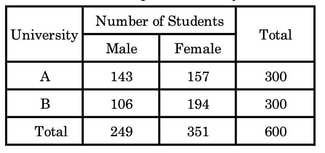
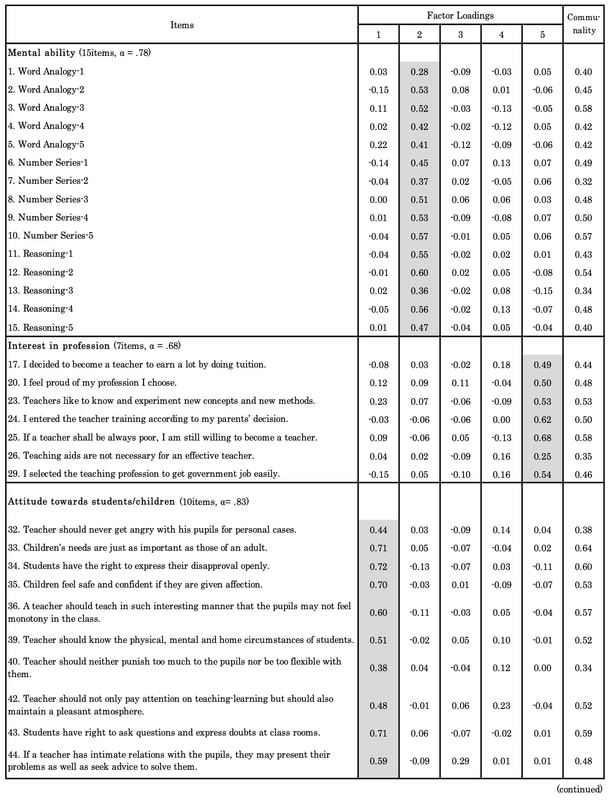
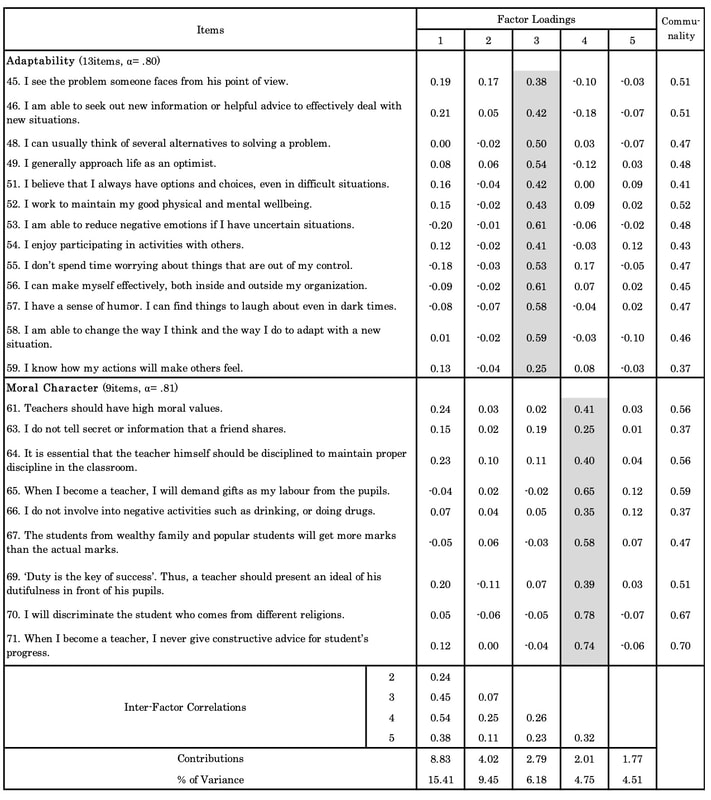


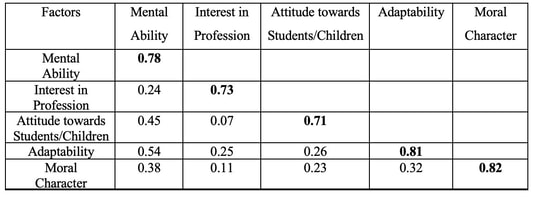
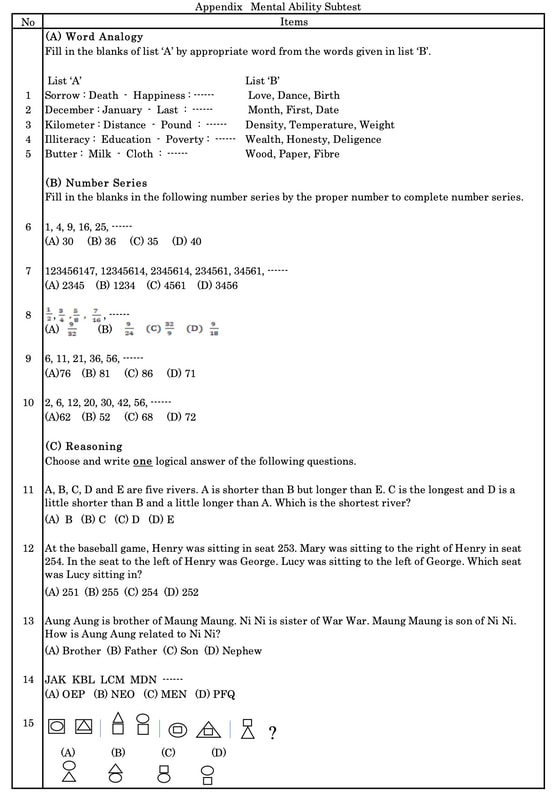

 RSS Feed
RSS Feed
